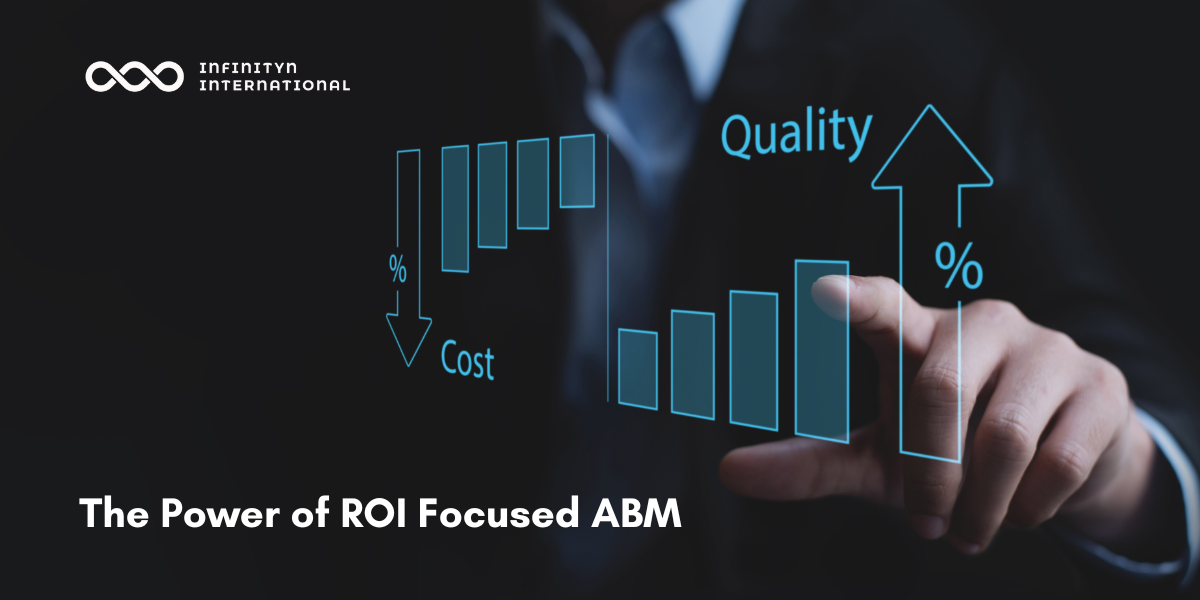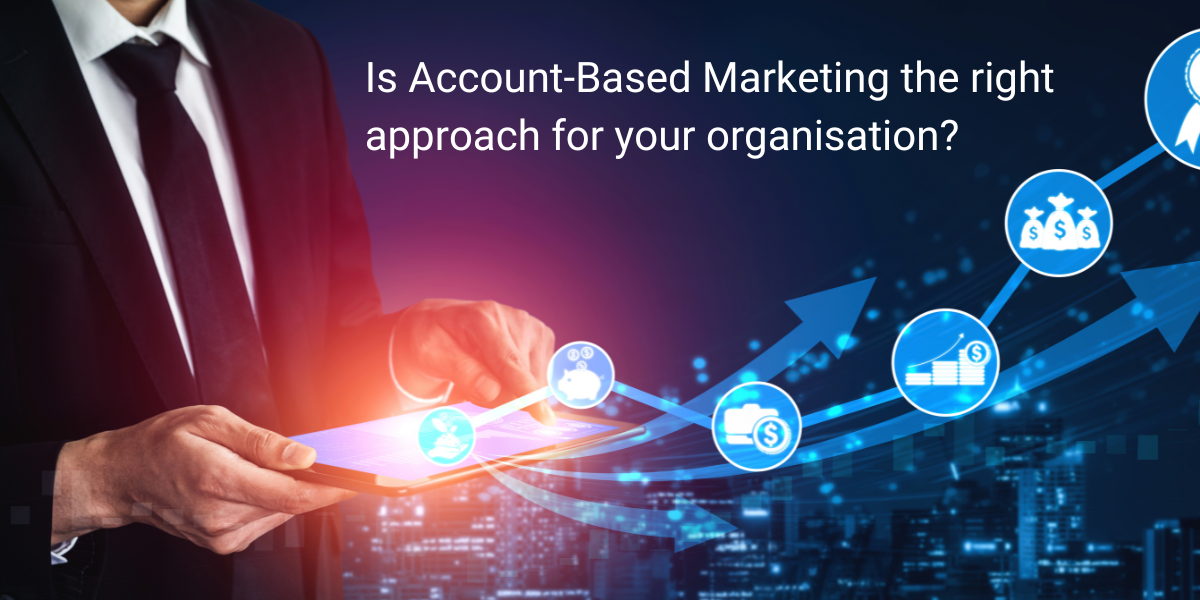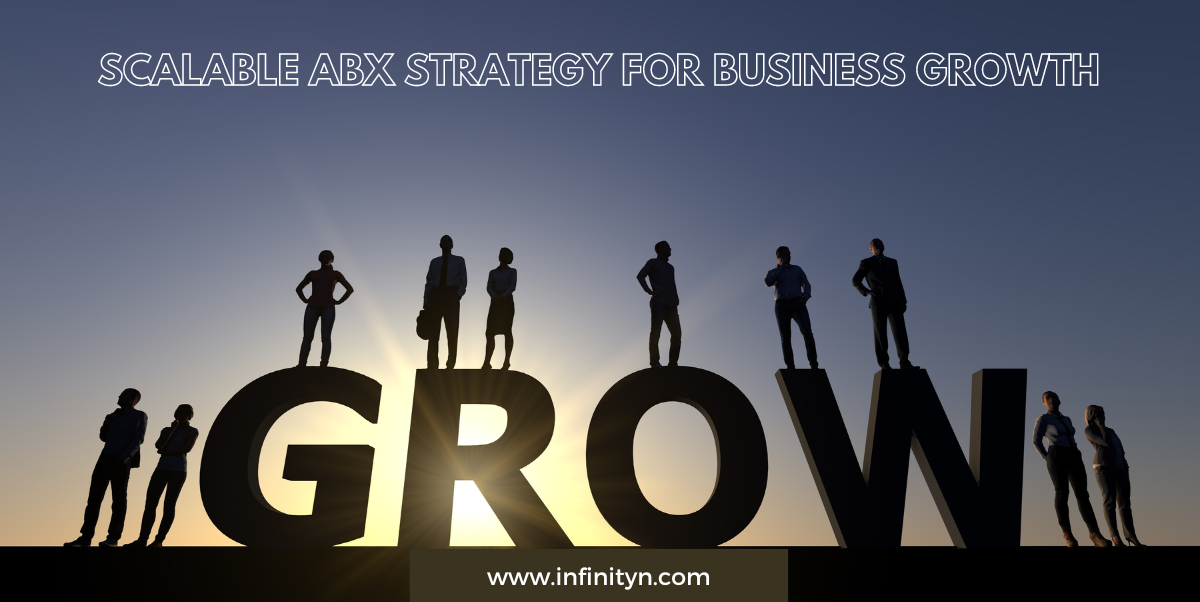Uniting Sales and Marketing in the Pursuit of ABM Excellence
In the dynamic and competitive business environment of today, the adoption of Account-Based Marketing (ABM) represents a strategic shift towards...
5 min read
 Kate Varvedo
:
May 21, 2024 4:20:40 AM
Kate Varvedo
:
May 21, 2024 4:20:40 AM

Strategic Investment in Technology
In the ever-evolving landscape of business, the journey from product ideation to market success is riddled with challenges and opportunities. At the heart of this journey lies the strategic imperative of a well-orchestrated go-to-market (GTM) strategy. However, in today's digital era, the path to success is increasingly intertwined with the strategic integration of technology. Let's embark on a journey to explore how investing in the right technological tools can pave the path for smarter, more effective go-to-market strategies.
In an era where technology underpins every aspect of business operations, organizations are compelled to harness the power of revtech (revenue technology) to propel their GTM strategies forward. This entails leveraging tools and platforms that enhance customer engagement, streamline sales processes, and optimize marketing endeavours.
To embark on this revtech journey, organizations must first define their GTM strategy objectives clearly. What are the desired outcomes? Improved lead generation? Enhanced customer retention? Accelerated time-to-market? These objectives serve as guiding stars in the selection of martech tools.
A critical step involves identifying existing challenges within the current GTM framework and recognizing potential opportunities for improvement. By finding pain points and untapped potential, organizations can strategically leverage martech solutions to address specific needs.
This effective martech adoption demands collaboration across departments. Engaging stakeholders from marketing, sales, customer service, and IT ensures that the selected tools align with diverse business requirements and operational realities.
Our ultimate goal is to find a singular platform that serves as the guiding light for all departments, fostering collaboration and driving seamless business growth across the organization's entirety.
Armed with insights from stakeholders, you can then embark on thorough research of available martech solutions. Factors such as scalability, integration capabilities, user-friendliness, and ROI potential should guide the evaluation process.
Revtech tools should seamlessly integrate with existing technology infrastructures. Compatibility with CRM systems, analytics platforms, and other core business applications ensures a harmonious tech ecosystem.
Additionally, selecting revtech tools goes beyond immediate needs; it involves anticipating future growth and scalability requirements. Opting for adaptable solutions that can evolve with the organization ensures long-term viability. So, partnering with reputable revtech vendors with a proven track record of successful implementations and robust customer support is crucial. Vendor credibility and ongoing support are instrumental in the smooth integration and optimization of martech tools.
Lastly, organizations should implement martech tools in iterative stages, starting with internal pilot projects where possible. Continuous monitoring and user feedback will drive refinement and optimization, ensuring maximum value extraction from martech investments.
So, the strategic integration of martech is indispensable for organizations seeking to thrive in today's digital marketplace. By following a structured approach to martech selection—anchored in clear objectives, collaborative assessment, diligent research, and continuous optimization— you can unlock the full potential of technology to drive smarter, more effective go-to-market strategies. By embracing this martech journey with purpose and precision, you can position yourself not just to navigate the digital landscape but to lead the way forward with confidence and competence.
However, to take it a step further, organizations must embrace an account-centric mindset. This approach revolves around leveraging cutting-edge technologies to prioritize high-intent accounts based on sophisticated intent data and continuous account monitoring. By tailoring personalized engagement strategies to these accounts, businesses can realize immediate pipeline impact and strengthen their market presence.
After selecting the right revtech tools, you will have the power to unveil Data-Driven Insights
A key driver of success lies in harnessing the power of account intelligence. By infusing Business Development Representatives (BDRs) with actionable insights derived from robust account data, organizations empower their teams to make informed decisions, win more business, and outperform competitors. This strategic utilization of account intelligence catalyzes sustained growth and market leadership.
In the state of GTM, knowledge is indeed power. Harnessing the vast reservoirs of data available in the digital landscape offers unparalleled insights into customer behaviour, market trends, and competitive dynamics.
However, the days of one-size-fits-all marketing are gone!
In today's hyperconnected world, businesses crave personalized experiences tailored to their unique preferences and needs. Enter technology-enabled audience targeting and personalization by leveraging advanced segmentation techniques and predictive analytics, you can pinpoint your ideal customers amidst the digital noise. Armed with this knowledge, you can craft hyper-targeted messaging and offers, forging deeper connections and driving higher conversion rates.
Streamlined Operations for Seamless Execution
Streamlined operations for seamless execution are essential once the right martech tools are in place and personalized strategies are developed, ensuring efficient rollout and internal adoption. However, achieving all the above requires a focus on efficiency at every stage of implementation and execution.
Efficiency is the cornerstone of effective GTM execution. Yet, the labyrinth of marketing and sales operations often proves daunting without the guiding hand of technology. From lead generation to pipeline management, integrated platforms and automation tools play a pivotal role in simplifying workflows and freeing up teams from routine tasks, allowing them to concentrate on strategic endeavours.
This synergy between technology and operations not only enhances productivity but also fosters collaboration and synchronization across departments, leading to improved agility and faster time-to-market.
In one of our previous articles, we explored sales buy-in and the alignment of sales and marketing efforts, where we discussed the critical importance of leveraging technology to bridge the gap between these two vital functions within an organization. The seamless integration of martech tools enables sales and marketing teams to work cohesively towards shared goals, such as lead generation and pipeline management.
This alignment is essential for optimizing resources, enhancing customer engagement, and ultimately driving revenue growth. By implementing integrated platforms and automation tools, organizations can achieve several key benefits:
Enterprises aspiring to achieve predictable revenue streams and sustainable growth must embrace Account-Based Experience (ABX). This transformative approach enables organizations to nurture future pipeline opportunities while capitalizing on existing accounts through targeted engagement strategies. ABX empowers businesses to orchestrate seamless customer experiences, driving loyalty and maximizing revenue potential.
Achieving success in account-centric GTM strategies requires more than just technological adoption—it demands a holistic framework that aligns with organizational objectives. By implementing a proven account-centric framework, organizations can optimize operations, enhance collaboration, and achieve tangible business outcomes. Real-life case studies provide actionable insights, showcasing how forward-thinking companies leverage technology to navigate complexities and achieve strategic growth.
Orchestrating Omni-Channel Engagement with the right revenue technologies
Orchestrating omnichannel engagement has become imperative for businesses aiming to connect with today's digitally savvy businesses across multiple touchpoints seamlessly. In this age of digital ubiquity, customers interact with brands through diverse channels such as social media, mobile apps, websites, and online stores. The challenge for businesses is to deliver a consistent and cohesive brand experience across these channels. This is where technology plays a crucial role in enabling companies to synchronize their messaging and branding efforts, ensuring a unified narrative that resonates with customers wherever they are.
At the heart of this synchronization lies the account-centric approach—a strategic paradigm shift that prioritizes personalized engagement with high-intent accounts, both for immediate pipeline impact and long-term growth acceleration. Therefore, to leverage technology for synchronization, technology acts as the “key player” in orchestrating omni-channel engagement. By using marketing technology (martech) solutions such as customer relationship management (CRM) systems, ABM platforms, marketing automation platforms, and data analytics tools, businesses can tailor messaging, content, and branding efforts to individual accounts, ensuring a unified narrative across channels.
Moreover, this approach empowers organizations to adapt and evolve in real time, leveraging agile frameworks and digital tools to respond swiftly to market shifts and capitalize on emerging opportunities.
Yet, quantifying the impact of these efforts has traditionally been challenging. With the right technology in place, businesses can harness advanced analytics and reporting capabilities to gain a comprehensive view of performance metrics. This enables them to track ROI, attribute revenue, and gauge the efficacy of their go-to-market (GTM) strategies with precision, ultimately refining approaches, optimizing resource allocation, and charting a course toward sustainable growth and profitability.
In today's digital age, success in GTM strategies requires more than traditional methodologies—it demands a holistic approach that leverages technology to cultivate meaningful customer relationships and drive revenue growth. Join us in exploring the transformative potential of account-centric technology and embark on a journey towards empowered go-to-market success. Unlock new avenues of growth, deepen customer engagements, and chart a course toward enduring success in the competitive marketplace of tomorrow.

In the dynamic and competitive business environment of today, the adoption of Account-Based Marketing (ABM) represents a strategic shift towards...

In the dynamic world of B2B marketing, Account-Based Marketing (ABM) has surfaced as a game-changing strategy, yielding significant returns on...

In the bustling landscape of modern business, data reigns supreme as the cornerstone of strategic decision-making. Yet, amidst the deluge of...

In the ever-evolving marketing strategies, Account-Based Marketing (ABM) has emerged as a powerful approach that focuses on targeting specific...

Amidst the constantly shifting terrain of contemporary marketing, the concept of Account-Based Marketing (ABM) has emerged as a game-changer for...

In the wake of unprecedented global challenges, the landscape of business has undergone a profound transformation. The era of uncertainty and chaos,...
The world of Marketing and Sales is an exciting and rather hectic one – sometimes unpredictable and sometimes easy to calculate, but no matter what...

In the dynamic realm of B2B marketing, collaboration often breeds innovation and success. This finds vivid expression in the strategic partnership...

Marketing goes beyond promotion. Marketing is creativity, profound planning, understanding of your audience, analysing data – especially nowadays,...

Businesses across different sectors and industries are facing hardships amidst the economic haze that has been looming over the world from the...

4 min read
Attending The Global ABM Conference in London last week sparked a thought-provoking question: could this event evolve into a broader forum, something...

What’s the philosophy behind the technology of the most successful ABM programs? Answering this question was not the original intent when we set out...